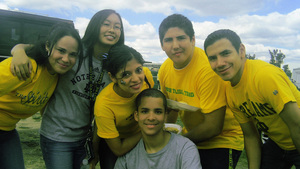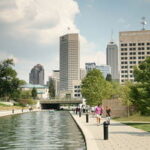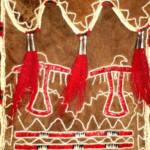For almost 17 years, I attended mass at Holy Rosary Church in Antioch, California every Sunday at 7:30 AM. Elderly folks became my friends with their warm, welcoming hugs and genuine smiles. Now, when I walk into Little Flower church right down the street from my house in South Bend, Indiana, the silence and lack of greetings make feel – for lack of a better word – weird. That and the fact when I glance around some Sundays, I realize I’m the only Asian besides my mom.
My mind flashbacks to my First Year Composition class at Notre Dame. I remember my professor mentioning something about Ku Klux Klans presently active in Indiana.
Nationally, Indiana was said to have the most powerful Ku Klux Klan. I found out the closest KKK faction to me is 12 miles away in Osceola. The headquarters of the American Knights of the KKK in Indiana is almost 100 miles away in Butler. Furthermore, Kokomo (93 miles away) was the site of the largest KKK gathering in history. Luckily, these sites are far. However, the first (and last, I believe) KKK march in South Bend was on May 5, 2001. Community members resented the Klan for choosing Cinco de Mayo for their rally; the day is intended to promote unity, and the KKK was planning on marching against that.
Fortunately, the KKK is unwelcome here in South Bend.
So what worries me? Although Notre Dame, a renowned university, seems to fall under a goody-two-shoes Catholic stereotype, there remains several racism and diversity issues on campus among other things.
The summer before I started schooling at Notre Dame, I was one of 35 students accepted into the Balfour-Hesburgh Scholars Program, a program solely for minorities. Aside from our regular class schedule, we had an “orientation” every Friday for four weeks. During these meetings, we were informed about racism on campus. Experiences told were disheartening. When I entered in the fall, nothing seemed too bad. But that was only my point of view. Some of my Balfour friends experienced different. One of them switched to an entirely new dormitory building because of racist roommates.
Every freshman at Notre Dame is required to take two units of “Contemporary Topics” in physical education. Aside from learning how our bodies work and how to take care of ourselves, a considerable amount of time is spent discussing diversity on campus. The minority breakdown at Notre Dame is as follows: 4.6% African American, 8% Asian American or Pacific Islander, 11% Hispanic American, and 0.6% Native American*. In comparison to the year before, African Americans went up by 0.6%, Asian and Hispanic Americans went up by 2% and Native Americans went down by 0.2%.
It’s shocking to hear white students say something like “There are so many blacks here,” when, regardless of numbers and percentages, the supposed diversity at Notre Dame is a joke.
My classmate said, “I definitely do not agree with the campus’ stand on admission. I completely disagree with the fact that a colored person would most likely get the admission over a white person of the same credentials. If it were truly to be made fair, the application for admission should be race blind. In other words, when applying, you do not state your race. That way each person is judged on the merit of their work, and accomplishments, and is no way related to color.”
I understand the urge to resolve these racial problems before really allowing the number of minority enrollments to increase; however, I think just the opposite may be the solution. If many white students on campus do not have any experience with people of a different race, what better way for them to learn about race relations than to have minorities readily at hand on campus, in classes, and in dorms along with the rest of the student body.
How will Notre Dame take care of this issue? Will they even take care of it? As my friend from Osceola said, “Everywhere you go, there will be racism,” whether it is covert or explicit. Sadly, you can’t avoid it.




